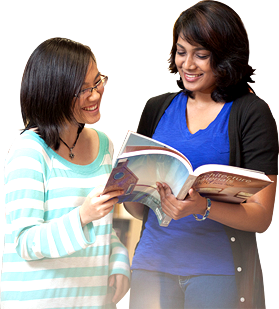
Reading Classical Chinese: A Cultural Journey into Chinese Language
讀懂文言文:漢語的文化旅程
Programme Period: July 12, 2021 to July 16, 2021 (Online Programme)
Class Time & Date: 09:30 - 12:30; Monday - Friday
Instructor: Dr. Tang Pui Ling - Associate Professor, School of Chinese
Fees: Half scholarships*; Students shall pay the total amount HK$1975 directly to the Faculty of Arts.
Registration: Please apply HERE* by June 1, 2021 (HKT)
*To apply for scholarships or grants, please select the specific programme on the system accordingly. (Deadlines for this scholarship and grant application are both on May 11, 2021)
Target: The course will be conducted in Cantonese and is designed for S4 - S6 students with basic reading ability of classical Chinese.
Course Description
Classical Chinese, which is a written form of Chinese that evolved from the pre- Qin period, has always been considered the most difficult part by Chinese language learners. This is mainly because students generally rely on the methods of rote memorization and recitation in learning classical expressions and structures. Actually, such approaches not only fail to efficiently enhance students’ competence in classical Chinese reading, but also gradually diminish their interests in learning the subject.
Having a profound grasp of classical Chinese is undoubtedly the key to achieve a precise comprehension and understanding of the classical works, which is significant in analyzing and evaluating the texts in an objective and comprehensive manner. We will also be able to gain abundant knowledge in relation to the history and culture of ancient China through studying the cultural perceptions embeded in the language. Linking up the languages between the present and the past, we will be able to identify their interrelations, which is conducive to consolidating our language knowledge.
The course will be conducted in Cantonese and is designed for high school students with basic reading ability of classical Chinese. It consists of two major parts: First, it will foster students’ perceptual knowledge towards classical Chinese through selected readings of representative ancient works. Second, highlighting the language differences between modern and classical Chinese, it will present an overview of the linguistic features of classical Chinese, including changes in word meanings, word- class flexibility, and word orders. With emphasis on both the theoretical and practical aspects, the course will familiarize students with the use of basic linguistic skills in analyzing ancient texts, with an aim to help them attain a higher level of competence in classical text reading.
文言文指以先秦口語為基礎而形成的古代漢語書面語。對於學生而言,文言文往往是中國語文學習的主要難點,其原因大概是由於學生遇到文言字詞及特殊句式時,大多採用「死背硬記」的方式。事實上,此類學習方法不僅未能有效提昇閱讀及理解的能力,更大大降低了文言文的學習興趣,難以達致理想的學習效果。
有效掌握文言是正確通讀及理解古代篇章的關鍵,我們可以從而就作品進行客觀具體的分析、欣賞及評鑒。此外,我們更可通過文言篇章所蘊含的文化內涵,瞭解古代的歷史文化,認識古今漢語的傳承關係,提昇語文的基礎與素養。本課程以粵語為教學語言,對象是能初步掌握文言文的高中學生。課程由兩個主要部分構成:第一,我們將通過文言文篇章的精細講讀,深化學生於古代漢語的感性知識;第二,課程通過文言文知識的系統介紹,引領學生認識古今漢語的差異,從而掌握古今異義、文言字詞及特殊句法等現象。本課程理論與實用兼重,除了基礎理論的講授之外,更強調古漢語知識於具體語言分析中的運用,協助學生掌握正確通讀文言文的方法,提昇閱讀及理解古代篇章的能力。
Programme Learning Outcomes
By completion of the course, students will be able to:
-
demonstrate a command of the basic linguistic features of classical Chinese;
-
explain the linguistic differences between classical Chinese and modern Chinese;
-
apply the basic principles of classical Chinese to translate classical Chinese texts
into standard modern Chinese;
-
understand classical Chinese language in a cultural context
在完成本科後,學生能夠:
1. 認識文言文在語法、詞匯、語音和文字等方面的特點;
2. 瞭解古今漢語之間的差異,掌握古今異義的詞語及特殊的句式,以及通假、異體、破讀等現象;
3. 運用文言文知識於具體的語言分析中,正確語譯文言作品;
4. 認識文言現象所蘊含的文化內涵。
Course content and topics
1. Introduction
-
Lexicon: changes in word meaning, synonymy and antonymy, and phonetic loans
-
Grammar: word classes, word-class flexibility, basic rules of word order
-
Selected readings of representative classical works
1. 導論
2. 詞匯:詞義演變、同義和反義、通假
3. 語法:詞性、詞類活用、語序
4. 文言文篇章選讀
Assessment
30% Class participation 40% Short assignments 30% Open book test
30% 課堂出席及參與; 40% 練習; 30% 開卷測驗
Disclaimer: Programme contents are subject to change without prior notice.

